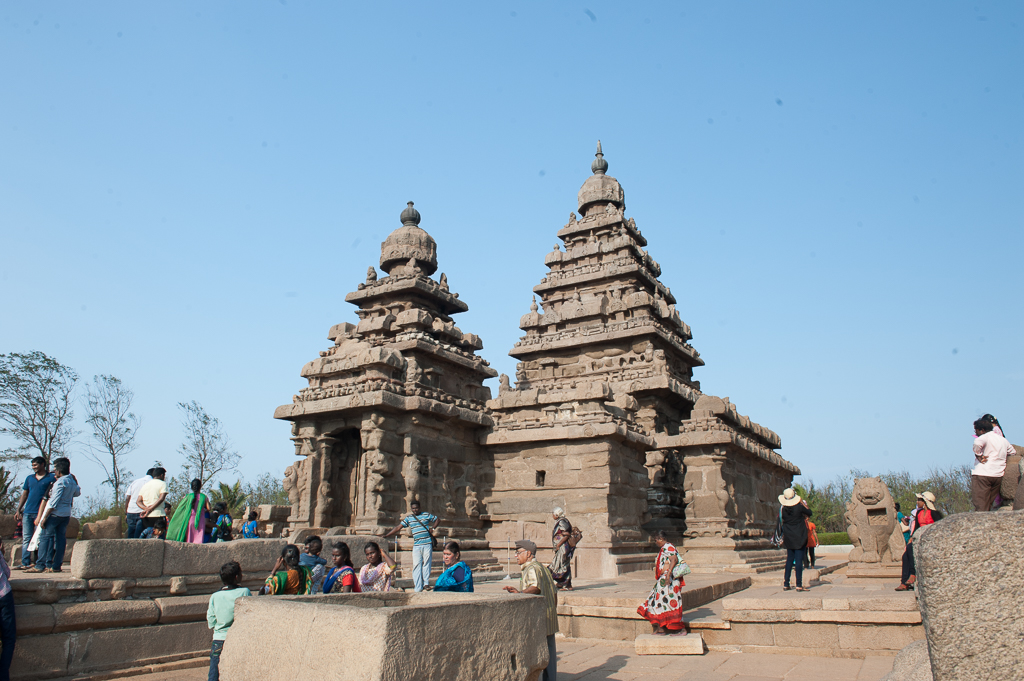
Shore Temple is in Mamallapuram, on the Bay of Bengal.
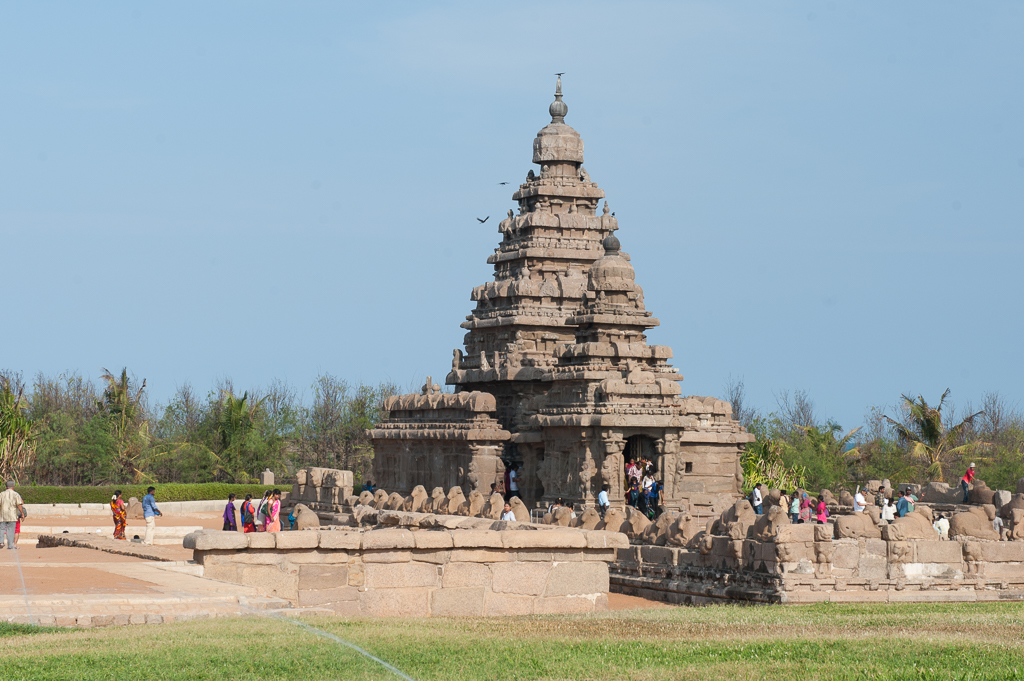
This UNESCO World Heritage Site exemplifies the architectural and sculptural excellence of the Pallava dynasty. These monuments were built during the 7th century AD.
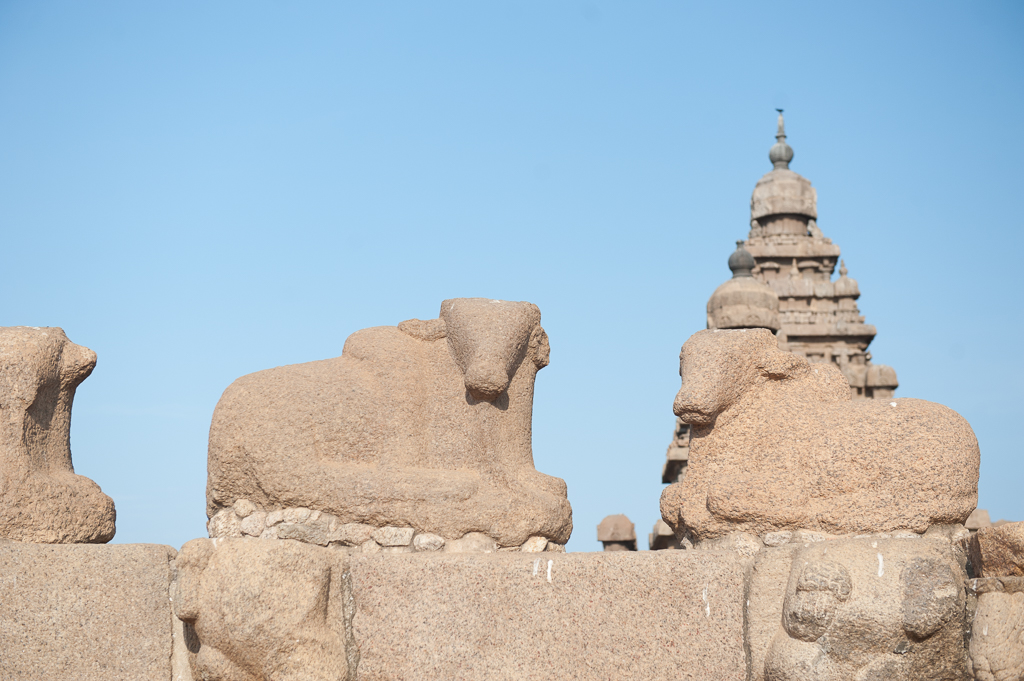
The entire temple stands on a naturally occurring granite boulder.
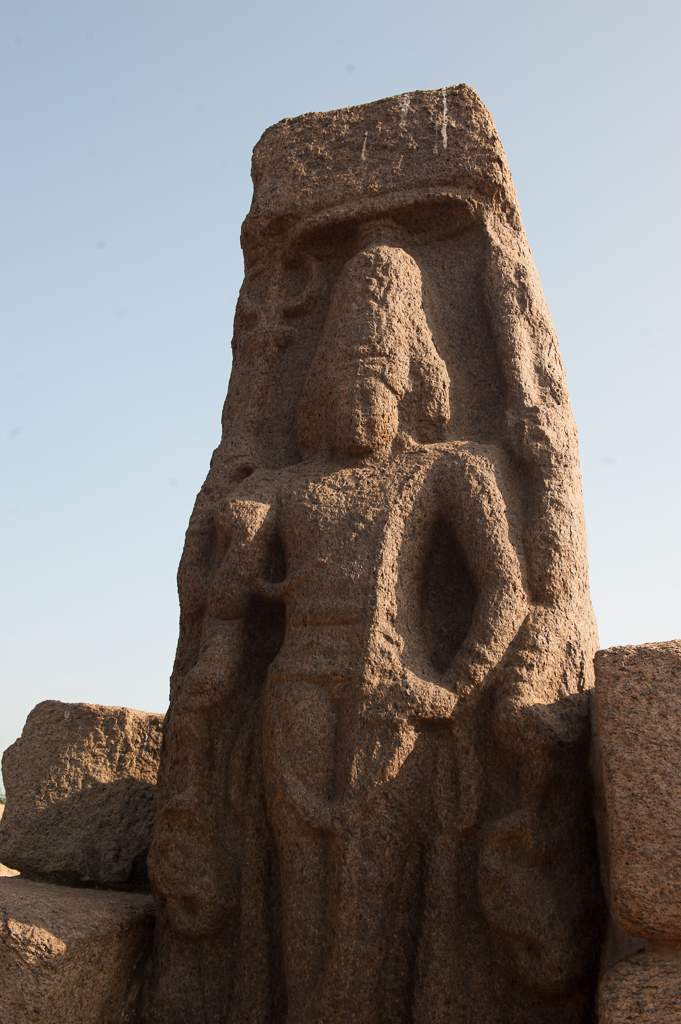
The temple complex has three separate shrines. Two are dedicated to the Hindu deity Shiva. The third, the smallest and oldest, in the center, is dedicated to Vishnu.
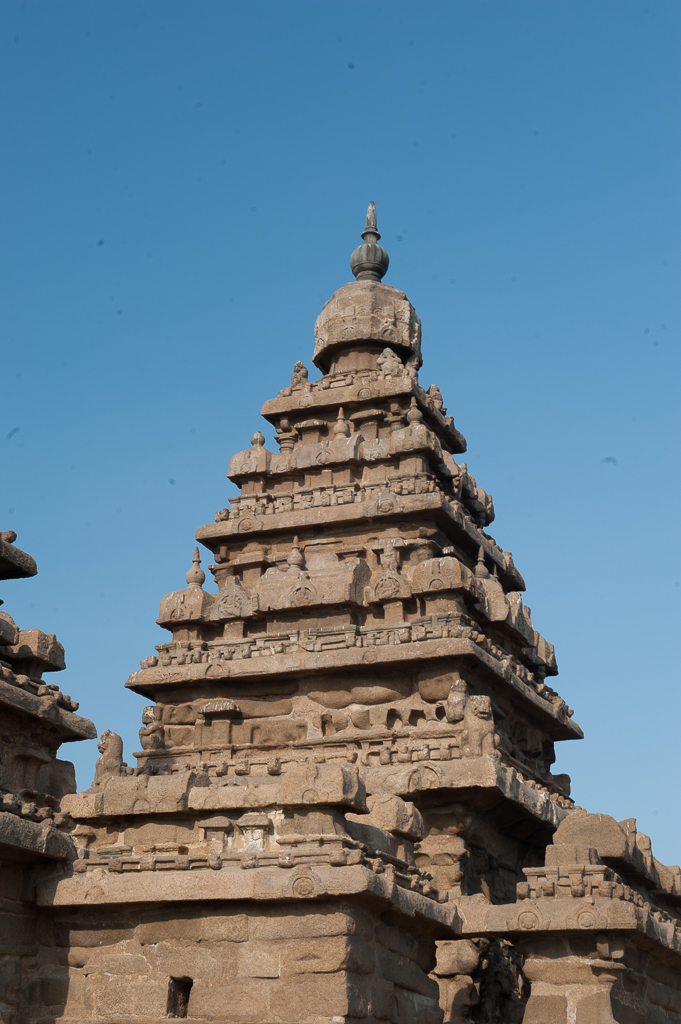
The two larger shrines have spires with intricate carvings on them depicting various deities, mythological scenes, and stories from Hindu scriptures. They also include rich sculptural depictions on both their inner and outer walls.
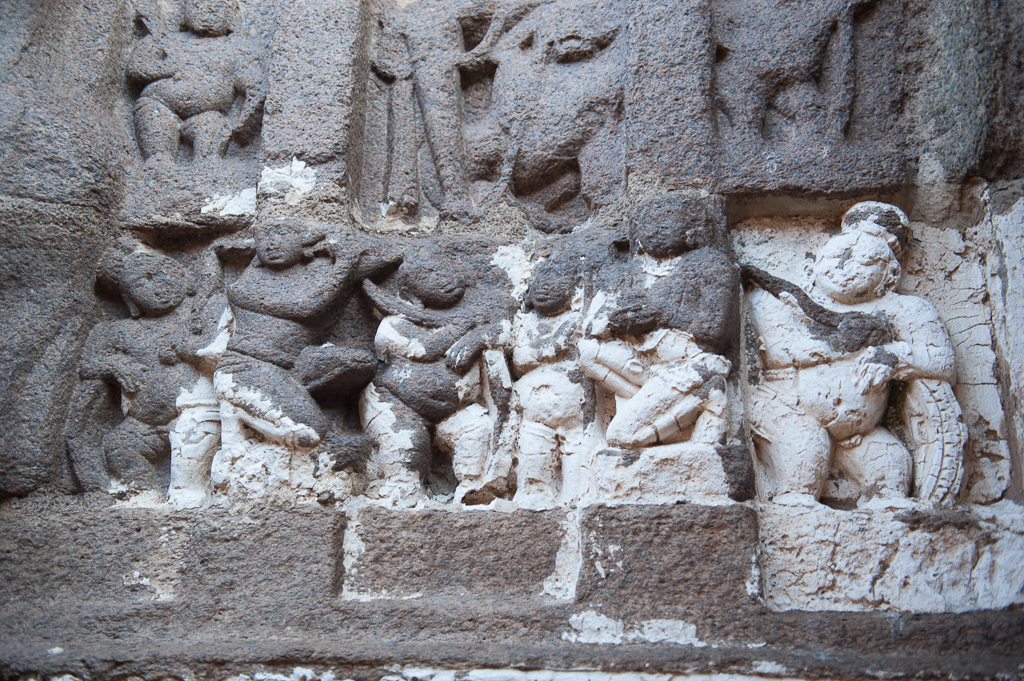
The smaller shrine’s walls have carvings depicting the life stories of Vishnu and one of his avatars, Krishna.
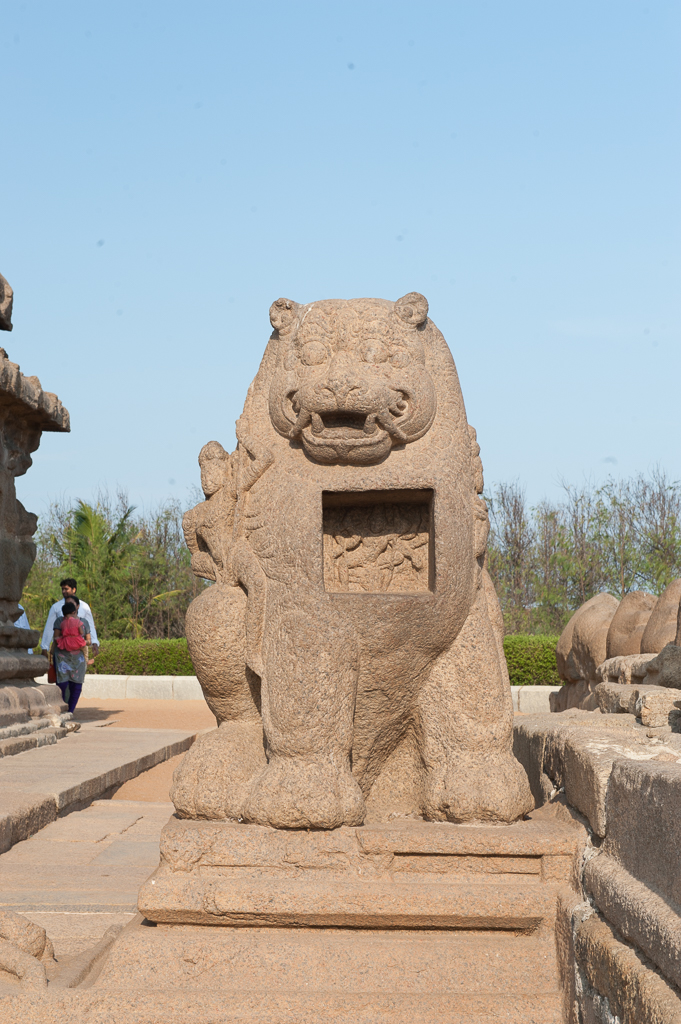
The other elements of the temple, including the gateways, walls, and superstructures, were constructed out of quarried stone and mortar.
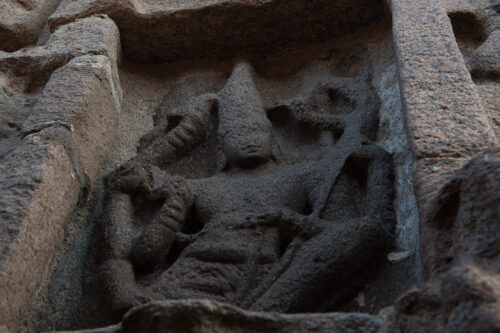
The entrance to the temple complex is from the western gateway, facing the smaller Shiva shrine. On each side of the gateway stand door guardians known as dvarapalas who welcome visitors to the complex and mark the site as sacred.

Years of wind and water have worn away the details of these carvings.
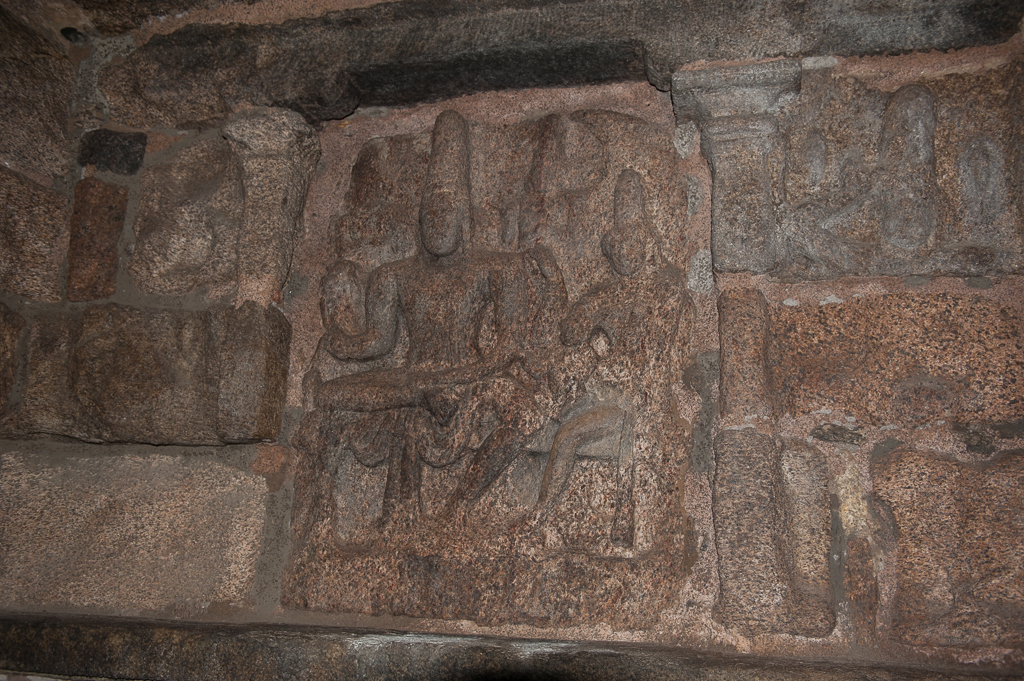
A row of seated bulls appear at the entrance wall of the larger Shiva shrine. These bulls represent Nandi, the vehicle of the god Shiva. Nandi is believed to be the guardian of Shiva’s home in the Himalayas, Mount Kailasha, and a seated Nandi sculpture is an essential part of a Shiva temple.
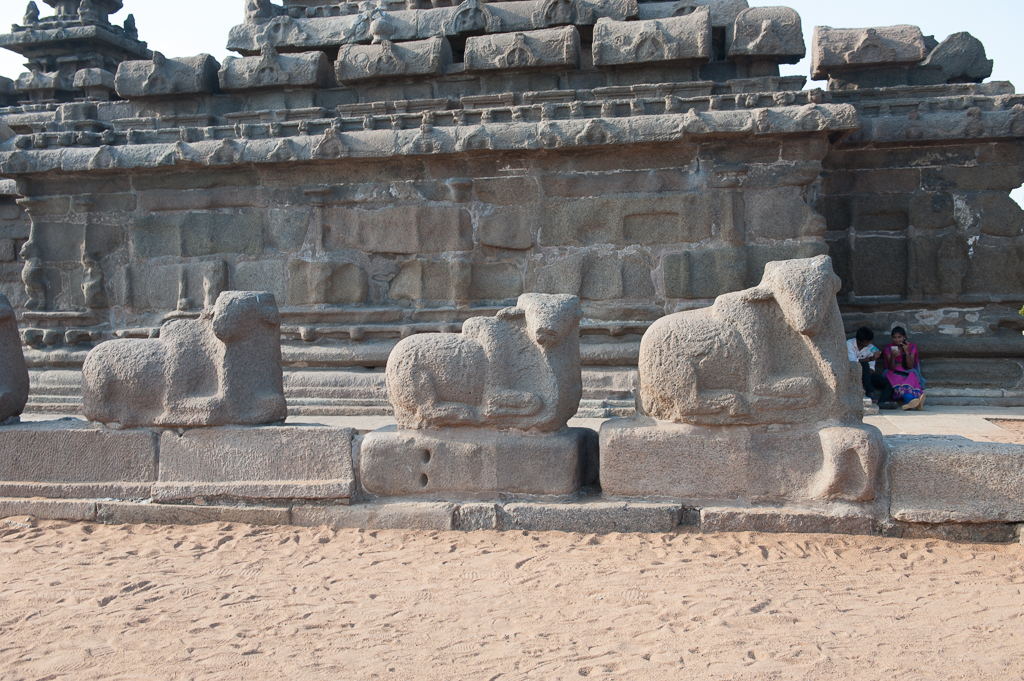
The Shore Temple reflects the progression of two architectural phases of Pallava architecture, from rock-cut structures to free-standing structural temples. It displays all the elements of mature Dravidian architecture. Lastly, it signifies religious harmony with sacred spaces dedicated to both Shiva and Vishnu.
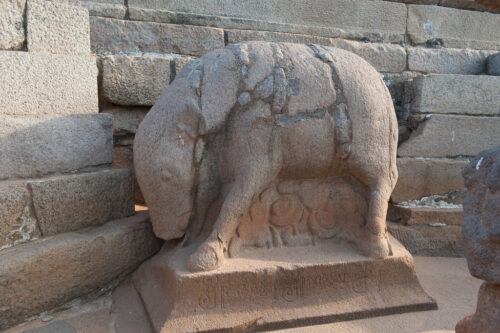
Most of the carvings have eroded, but what can you expect from seventh century construction?
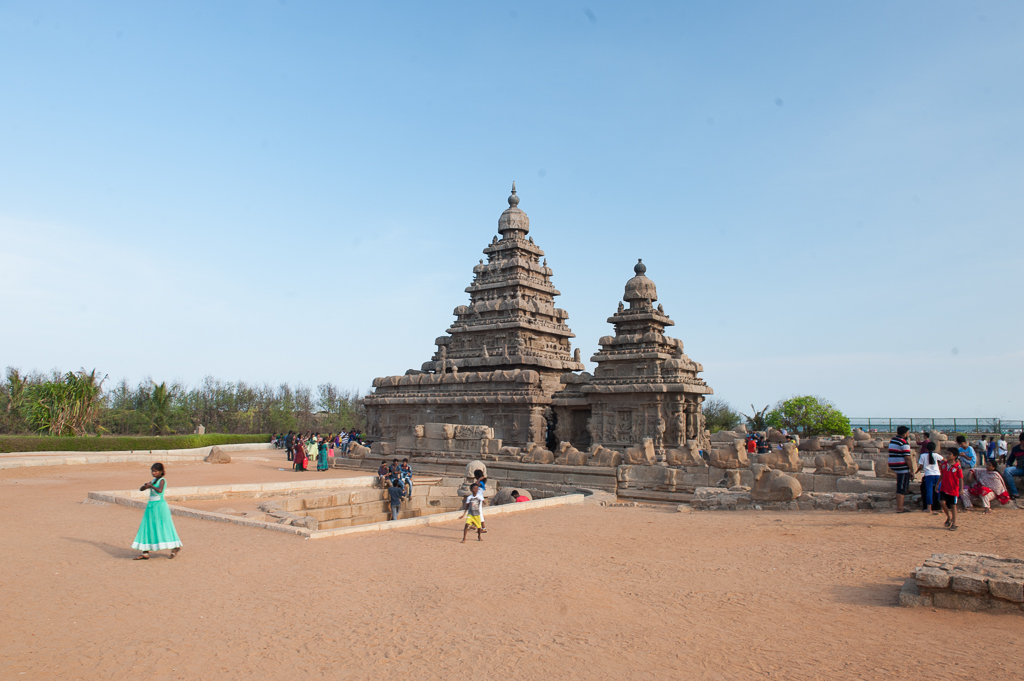
This structure is believed to be the only remaining of a series of buildings that once extended along the now-submerged coastline.
No comments yet.